Static VAR Compensator (SVC) and Static Synchronous Compensator (STATCOM) are important devices in FACTS family, and is widely recognized as an effective and economical means to solve the power system stability problem. SVC and STATCOM are used as shunt in transmission system. In the present work a series compensated Distributed transmission line (345KV, 450km, 50Hz) with a shunt FACTS devices SVC and STATCOM is considered to the optimal location of the shunt FACTS devices to get the highest possible benefits of maximum power transfer and system stability. Effect of change in degree of series compensation on the optimal location of the shunt FACTS device to get the highest possible benefit is studied. It is found that the optimal location of the shunt FACTS device varies with the change in the level of series compensation to get the maximum benefit in terms of power transfer capability and stability of the system. All the simulations for the above work have been carried out using MATLAB /SIMULINK software.
Keywords |
| optimal placement, SVC, STATCOM, degree of series compensation, long transmission line etc. |
LITERATURE SURVEY |
| During the last decade a number of control devices under the term Flexible AC Transmission Systems (FACTS)
technology
have been proposed and implemented. The FACTS devices can be used for power flow control, loop flow control, load
sharing among parallel corridors, voltage regulation [1].The basic concepts of the proposed generalized power
flow controller
that is able to maintain prescribed, and independently controllable, real power and reactive power powerflow in
the line [2].
The term and definition of various FACTS devices are described in references [3, 4]. |
I. INTRODUCTION |
| The FACTS controllers offer a great opportunity to regulate the transmission of alternating current (AC),
increasing or diminishing the power flow in specific lines and responding almost instantaneously to the stability
problems. The potential of this technology is based on the possibility of controlling the route of the power flow
and the
ability of connecting networks that are not adequately interconnected, giving the possibility of trading energy
between
distant agents. It is meant to enhance controllability and increase power transfer capability. It is generally
power
electronics based device. The FACTS devices can be divided in three groups, dependent on their switching
technology:
mechanically switched (such as phase shifting transformers), thyristor switched or fast switched, using IGBTs.
While
some types of FACTS, such as the phase shifting transformer (PST) and the static VAR compensator (SVC) are
already
well known and used in power systems, new developments in power electronics and control have extended the
application range of FACTS. |
| Furthermore, intermittent renewable energy sources and increasing international power flows provide new
applications
for FACTS. The additional flexibility and controllability of FACTS allow to mitigate the problems associated with
the
unreliable of supply issues of renewable. SVCs and STATCOM devices are well suited to provide ancillary services
(such as voltage control) to the grid and fault rid through capabilities which standard wind farms cannot provide
Furthermore, FACTS reduce oscillations in the grid, which is especially interesting when dealing with the
stochastic
behaviour of renewable. |
| The SVC provides an excellent source of rapidly controllable reactive shunt compensation for dynamic voltage
control
through its utilization of high-speed thyristor switching/controlled reactive devices. An SVC is typically made
up of the
following major components: |
| Coupling transformer |
| Thyristor valves |
| Reactors |
| Capacitors (often tuned for harmonic filtering) |
| In general, the two thyristor valve controlled/switched concepts used with SVCs are the thyristor-controlled
reactor
(TCR) and the thyristor-switched capacitor |
| A. Dynamic Response of the SVC |
| When the SVC is operating in voltage regulation mode, its response speed to a change of system voltage depends
on
the voltage regulator gains (proportional gain KP and integral gain Ki, the droop reactance X , and the system
strength
(short circuit level). For an integral-type voltage regulator (KP = 0), if the voltage measurement time constant
Tm and
the average time delay Td due to valve firing are neglected, the closed-loop system consisting of the SVC and the
power
system can be approximated by a first-order system having the following closed-loop time constant. |
| B. Description of Static VAR Compensator |
| The static VAR compensator (SVC) is a shunt device of the flexible AC transmission systems (FACTS) family using
power electronics to control power flow and improve transient stability on power grids. The SVC regulates voltage
at
its terminals by controlling the amount of reactive power injected into or absorbed from the power system. Each
capacitor bank is switched on and off by three thyristor switches (Thyristor Switched Capacitor or TSC). Reactors
are
either switched on-off (Thyristor Switched Reactor or TSR) or phase-controlled (Thyristor Controlled Reactor or
TCR). |
| C. Single-line Diagram of an SVC and Its Control System |
| The control system consists of, -A measurement system measuring the positive-sequence voltage to be controlled.
A
Fourier-based measurement system using a one-cycle running average is used. A voltage regulator that uses the
voltage
error (difference between the measured voltage Vm and the reference voltage Vref) to determine the SVC
susceptance B
needed to keep the system voltage constant. A distribution unit that determines the TSCs (and eventually TSRs)
that
must be switched in and out, and computes the firing angle M of TCRs. A synchronizing system using a phase-locked
loop (PLL) synchronized on the secondary voltages and a pulse generator that send appropriate pulses to the
thyristor. |
| D. SVC V-I Characteristic |
| The SVC can be operated in two different modes: In voltage regulation mode and in VAR control mode (the SVC
susceptance is kept constant) when the SVC is operated in voltage regulation mode, it implements the following
V-I
characteristic. As long as the SVC susceptance B stays within the maximum and minimum susceptance values imposed
by the total reactive power of capacitor banks (BCmax) and reactor banks (Blmax) the voltage is regulated at the
reference
voltage Vref . However, a voltage droop is normally used (usually between 1% and 4% at maximum reactive power
output), and the V-I characteristic has the slope indicated in the Figure.4.The V-I characteristic is described
by the
following three equations: SVC is in regulation range (−BCmax < < Blmax ) |
III. MODELING OF THE STATCOM |
| A. Configuration |
| STATCOM is one of the important shunt connected Flexible AC Transmission Systems (FACTS) controllers to control
power flow and make better transient stability. The basic structure of STATCOM in schematic diagram is shown in
Figure 6. It regulates voltage at its terminal by changing the amount of reactive power in or out from the power
system.
When system voltage is low, the STATCOM inject reactive power. When system voltage is high, it absorbs reactive
power. |
| B. Phase angle control |
| In this case the quantity controlled is the phase angle δ. The modulation index “m” is kept
constant and the fundamental
voltage component of the STATCOM is controlled by changing the DC link voltage. By further charging of the DC
link capacitor, the DC voltage will be increased, which in turn increases the reactive power delivered or the
reactive
power absorbed by the STATCOM. On the other hand, by discharging the DC link capacitor, the reactive power
delivered is decreased in capacitive operation mode or the reactive power absorbed by the STATCOM in an inductive
power mode increases. For both capacitive and inductive operations in steady-state, the STATCOM voltage lags
behind
AC line voltage (δ> 0). |
| By making phase angle δ negative, power can be extracted from DC link. If the STATCOM becomes lesser than
the
extracted power, Pc in becomes negative and STATCOM starts to deliver active power to the source. During this
transient state operation, Vd gradually decreases. The phasor diagrams which illustrating power flow between the
DC
link in transient state and the ac supply is shown in above Figure 5. For a phase angle control system, the open
loop
response time is determined by the DC link capacitor and the input filter inductance. The inductance is applied
to filter
out converter harmonics and by using higher values of inductance; the STATCOM current harmonics is
minimized. |
| C. Operating Principle of the STATCOM |
| The operating principle of STATCOM is explained in the figure.1 showing the active and reactive power transfer
between a power system and a VSC. In this figure, V1 denotes the power system voltage to be controlled and V2 is
the
voltage produced by the VSC. During steady state working condition, the voltage V2 produced by the VSC is in
phase
withV1 (i.e.=0), so that only reactive power is flowing (Active power P=0). If the magnitude of voltage
V2produced by
VSC is less than the magnitude of power system voltage V1, reactive power Q is flowing from power system to VSC
(STATCOM is absorbing reactive power mode). |
 |
| D. STATCOM V-I characteristic |
| Voltage regulation mode |
| VAR control mode |
| When the STATCOM is worked in voltage regulation mode, it implements the V-I characteristic as shown in Fig.
7.The V-I characteristic is depicted by the following equation:
Where V= Positive sequence voltage (p.u) I = Reactive current |
| (I > 0 indicates an inductive current and I< 0indicates capacitive current) |
| Xs = Slope (p.u. /Pnom : usually between 1% and 5%) Pnom =Converter rating in MVA |
| In this scheme, each node with message searches for possible path nodes to copy its message. Hence, possible
path
nodes of a node are considered. Using NSS, each node having message selects its path nodes to provide a
sufficient
level of end-to-end latency while examining its transmission effort. Here, it derives the CSS measure to permit
CRNetworks
nodes to decide which licensed channels should be used. The aim of CSS is to maximize spectrum utilization
with minimum interference to primary system. Assume that there are M licensed channels with different bandwidth
values and y denotes the bandwidth of channel c. Each CR-Networks node is also assumed to periodically sense a
set of
M licensed channels. Mi denotes the set including Ids of licensed channels that are periodically sensed by node
i.
suppose that channel c is periodically sensed by node i in each slot and channel c is idle during the time
interval x
called channel idle duration. Here, it use the product of channel bandwidth y and the channel idle duration x, tc
= xy, as
a metric to examine the channel idleness. Furthermore, failures in the sensing of primary users are assumed to
cause the
collisions among the transmissions of primary users and CR-Networks nodes. |
IV.TRANSMISSION LINE MODEL |
| In this paper, the transmission line is modelled by a two port, four terminal networks as Shown in Figure
3.Transmission lines are operated with a balanced three phase load; the analysis can therefore proceed on a per
phase
basis. A transmission line on a per phase basis can be regarded as a two port network, where in the sending end
voltage
and current are related to the receiving end voltage and current through ABCD constants as |
| The ABCD constants of a line of length l, having a series impedance of z Ω km and shunt admittance of y S
km are
given by |
| A=D=cosh( γl) B=ZC sinh(γl) C = sinh(γl) (8) |
| Where, ZC=zy γ=zy ZC=Characteristic impedance of the line γ=Propagation constant of the line
z=series
impedance/unit length/phase y =shunt admittance/ unit length/phase to neutral l=transmission line length
α=attenuation
constant β=phase constant γ =Propagation constant of the line z=series impedance/unit
length/phase. |
| A. Power flow through a transmission line for a actual line model |
| The principle of power flow through a transmission line is illustrated through a single transmission line (2-
node/2-bus
system).Let us consider receiving-end voltage as a reference phasor ( V ∟0) and let the sending end voltage
lead it by
an angle δ is known as the torque angle |
| The complex power leaving the RE and entering the SE of the transmission line can be expressed as |
| Sr=Pr+Qr=Vrlr* |
| Ss=Ps+Qs=Vsls |
| It is clear from the RE power reaches the maximum value when the angle δ becomes β. However, the SE
power
becomes maximum at δ = (Π− β). In this study, a 345 kV single circuit transmission line (450
km in length), is
considered. It is assumed that each phase of line has a bundle of 2 conductors of size one million c-mils each
and
conductors are fully transposed. The series impedance and shunt admittance of the line are found to be Z=
(0.02986 +
j0.2849) Ω/km and Y = j3.989 ×106 S/km, respectively, at 50 Hz. The parameters are obtained using the
MATLAB
/SIMULINK software. The results of the line are presented in p.u. on a 100 MVA, 345 kV. |
| Consider that the line is transferring power from a large generating station to an infinite bus and equipped
with series
capacitor at centre and a shunt FACTS device at point ‘’m’’ as shown in Figure 10.
Parameter k is used to show the
fraction of the line length at which the FACTS device is placed. The shunt FACTS device are SVC and STATCOM
and is usually connected to the through a step-down transformer. The transmission line is divided into 2 sections
(1 &
2), and section 2 is further divided in subsections of length [(0.5−K) & half-line length]. Each
section is represented by
a separate 2-port, 4-terminal network (similar to Figure 10) with its own ABCD constants considering the actual
line
model |
IV. RESULT AND DISCUSSION |
| For a simplified model, when there is no FACTS device connected to the line, maximum power transfer through the
line is given by [3]: Many researchers established that the optimal location of shunt FACTS device for a
simplified
model is at K= 0.5 when there is no series compensation in the line. For such cases maximum power transmission
capability and maximum transmission angle become double. |
| However, for an actual line model power flow is given by the above results may not be considered accurate. One
of the
objectives of this paper is to find the maximum power and corresponding location of shunt FACTS device for
different
series compensation levels (%S) located at the centre of the line. A sophisticated computer program was developed
to
determine the various characteristics of the system of Figure 2 using an actual model of the line sections. The
constant
of the same RE power of section (1) and SE power of section (2) ( 1= 2 ) is included into the problem. In all
cases,1.0
p.u. unless specified. The maximum power and corresponding angle are prior determined for various values of
location
(K). |
| Thus, to get the highest benefit in terms of maximum it means that when series compensation level (%S) is
increased
then the optimal location of the shunt device shifts towards the generator side. Similarly when %S = 30 then the
optimal location is at K = 0.3 and for %S = 45 it is at K = 0.25. Figure 9 shows the variation in optimal off
centre
location of the shunt FACTS device against the degree of series compensation level (%S) for given R/X ratio of
line. |
VI. CONCLUSION |
| This paper investigates the effect of series compensation on the optimal location of a shunt FACTS device to
get the
highest possible benefit of maximum power transfer and system stability. Various results were found for an actual
line
model of a series compensated 345 kV, 450 km line. It has been found that the optimal location of the shunt FACTS
device is not fixed as reported by many researchers in the case of uncompensated lines but it changes with the
change
in degree of series compensation. The deviation in the optimal location of the shunt FACT device from the centre
point
of line depends upon the degree of series compensation and it increases almost linearly from the centre point of
the
transmission line towards the generator side as the degree of series compensation (%S) is increased. Both the
power
transfer capability and stability of the system can be improved much more if the shunt FACTS device is placed at
the
new optimal location instead of at the mid-point of the line. The effect of SVC and STATCOM controllers in
enhancing power system stability has been examined. Though both the devices can provide extra damping to the
system, it has been demonstrated that STATCOM is very effective in enhancing system performance in situations
where system voltages are very much depressed. Also, because of its fast response time, STATCOM control is
superior
to that of SVC. |
| It can be observed in Figure 9 that the optimal off-centre location is 10% for the uncompensated line. When
series
compensation level (%S) is increased than optimal off-centre location increases linearly and reaches its highest
value
55% for %S = 45. Operation of the UPFC demands proper power rating of the series and shunt branches. The rating
should enable the UPFC carrying out pre-defined power flow objective. |
Figures at a glance |
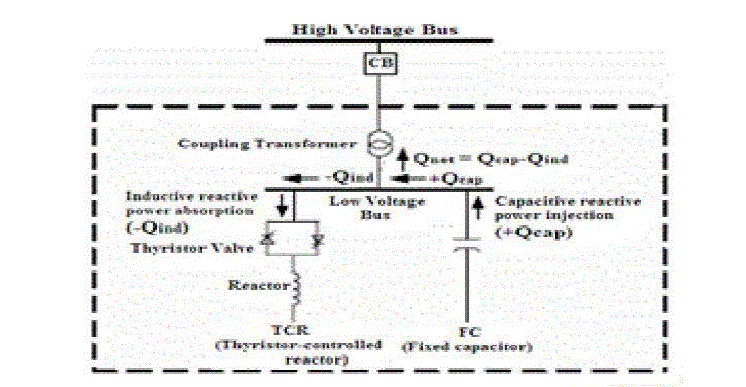 |
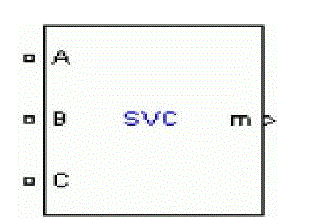 |
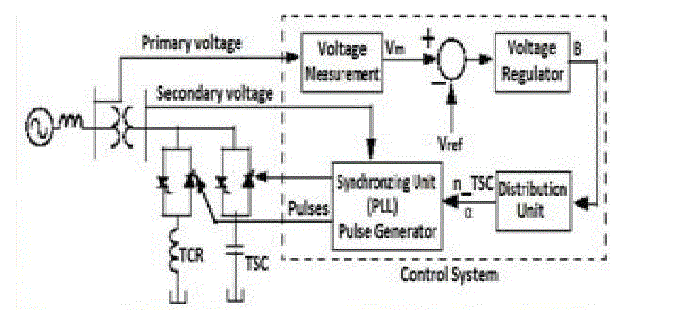 |
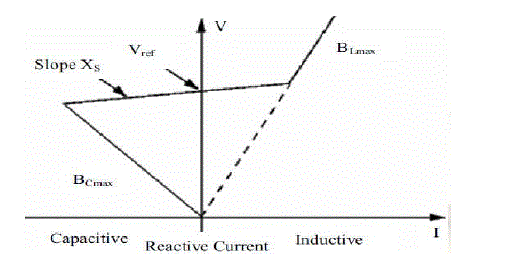 |
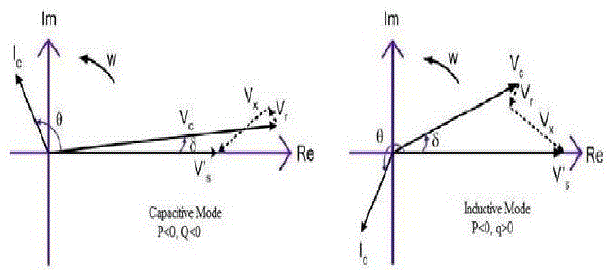 |
| Figure 1 |
Figure 2 |
Figure 3 |
Figure 4 |
Figure 5 |
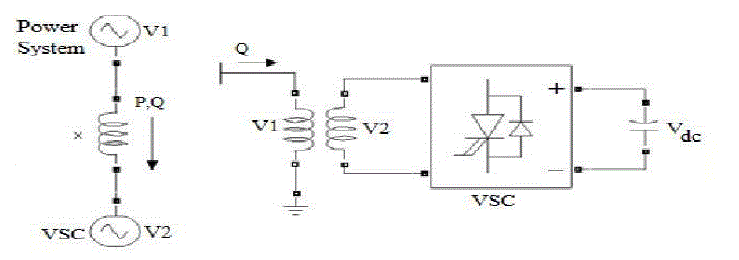 |
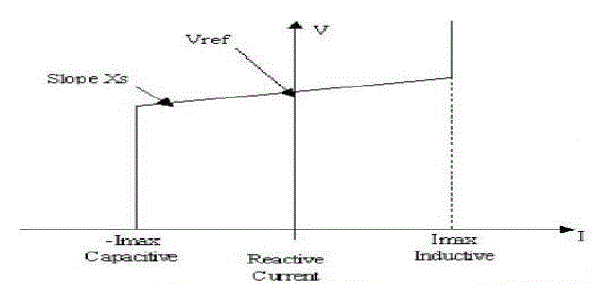 |
 |
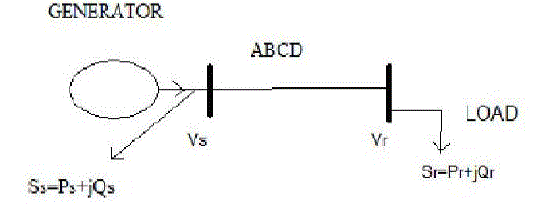 |
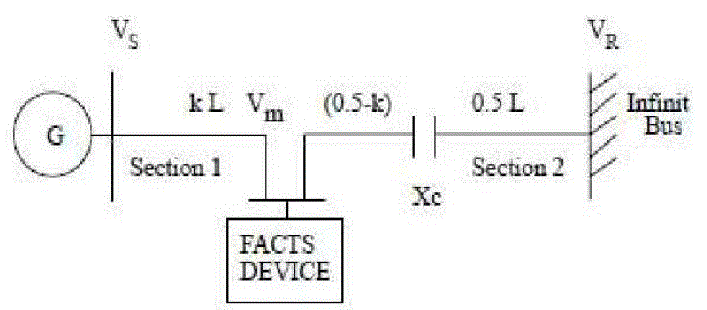 |
| Figure 6 |
Figure 7 |
Figure 8 |
Figure 9 |
Figure 10 |
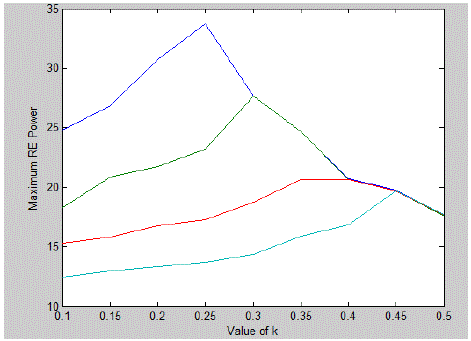 |
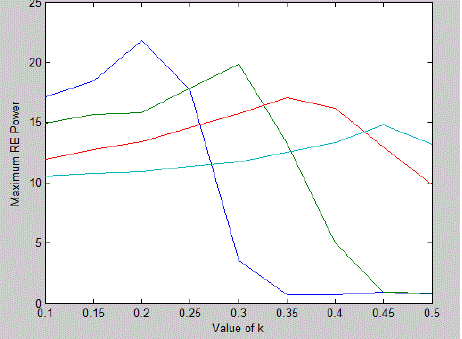 |
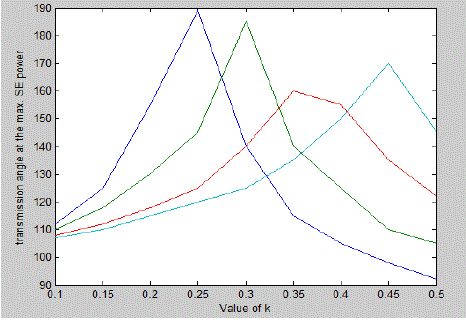 |
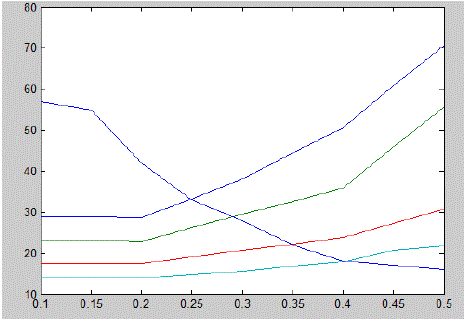 |
| Figure 11 |
Figure 12 |
Figure 13 |
Figure 14 |
|
| |
References |
- Nemat-Talebi et al, SoutheastCon, 2004.
Proceedings. IEEE “An efficient Power injection modeling and sequential power flow Algorithm for FACTS
Devices”, page(s): 97- 104.
- Gyugyi, L. 1995, ”Unified power flow
controller concept for flexible AC Transmission system”, IEEE Proceedings- Volume 10, Issue 2,Apr 1995 Page
(s):1085 - 1097.
- M.H. Haque,2000, “Optimal location of shunt
FACTS devices in long transmission line”,IEE Proceedings on Generation Transmission &Distribution, Vol.
147, No. 4, pp. 218-22, 2000.
- Narain G. Hingorani, Laszlo Gyugyi , 1999,
Understanding FACTS: Concepts and Technology of Flexible AC Transmission Systems,Wiley-IEEE Press, December
1999.
- N.G. Hingorani, L. Gyugyi, Understanding FACTS,
Concept and Technology of Flexible AC Transmission Systems, NewY ork, Wiley,2000.
- Xiao-Ping Zhang, Christian Rehtanz, Bikash Pal,
2006, Flexible AC Transmission Systems: Modelling and Control,Springer, March2006.
- Edris, R. Adapa, M.H. Baker, L. Bohmann, K. Clark, K. Habashi, L.
Gyugyi, J. Lemay, A. Mehraban, A.K. Myers, J. Reeve, F. Sener,D.R. Torgerson, R.R. Wood, Proposed Terms and Definitions
for Flexible AC Transmission System (FACTS), IEEE Transactions onPower Delivery, Vol. 12, No. 4, October 1997.
|